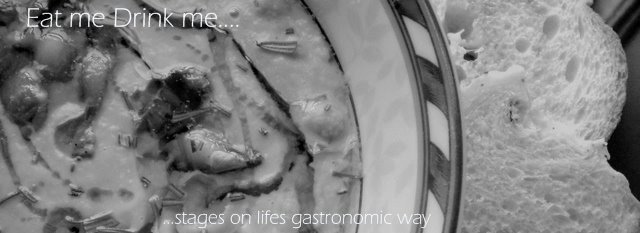
Pictured - kedgeree, or at least a form thereof, reheated in a break from gutting the new house. Freezing fog, zero insulation, single glazing, and wide open doors make this spicy Indian dish a perfect winter warmer.
The new house will make posting....intermittent. Lots of work to do, but Autumn should see posts on recipes to cope with the expected fruit glut - we have three established orchards to cope with - and hopefully a stack of posts on building raised beds, and mushroom cultivation in the outbuildings will follow. Poly tunnels the next year, and, fingers crossed, a nice fat baconer fattening up in our stables.
But, for the moment, kedgeree.
Originally an Indian dish, to which the Imperials added smokies, it is now often referred to as Anglo-Indian, though the Scots insist they brought it with them in the 1700's. It's typically cooked with milk, or cream, or butter, and with flaked haddock,and was served as part of the early morning banquet breakfasts, truly, unbelievably epic repasts the colonial administration had served to them for their 5am starts (William Dalrymple in his book on the so called Indian Mutiny, The Last Mughal, lists a typical breakfast repast as including cold and curried meats, eggs, kedgeree, fruits and nuts, porridge, bacon, game.....).
Several recipes call for cooking the rice in a spiced milk mixture, or frying it in butter, then boiling, or adding cream, milk, or butter to the finished dish, or, more commonly, poaching the haddock in milk. All insist on haddock, though the dish speaks to me of leftovers, innovation, and a larder based make-do ethos.
I am constitutionally incapable of coping with the English predilection for combining rice and milk. Creamed rice is a tinned abomination best used with which to execute it's inventor. And haddock always reminds me of TinTin.
And so, my version is entirely inauthentic. Authentic versions are available here, here, and here...
Ingredients (serves a hungry 5)
Smoked mackerel fillets, skinned and flaked (2/3 per person is a good amount)
2 cups of basmati rice
120g of frozen peas
120g of frozen sweetcorn
80g of broad beans, shelled
50g Large golden sultanas
50g flaked almonds, toasted
Two peppers, roasted, skinned and sliced
1 large onion, finely diced
5 eggs, boiled and peeled, sliced into quarters (a 5 minute boil is more than sufficient, poached works well here too)
For the masala - quantities are up to you, I like mine quite spicy
2 tbsp coriander seed
1 tbsp black mustard seen
1/2 tbsp black peppercorns
1 - 1.5 tbsp of cumin seed
1 tbsp turmeric
1.5 inches of fresh ginger, finely diced
Salt
And I use a storebought currypowder mix to adjust the taste and heat while cooking
To garnish
Sliced spring onions,
A generous handful or coriander, roughly chopped
The zest and juice of a lemon
Boil your basmati, and set aside to cool. Refrigerate for four hours.
Grind your masala in a pestle and mortar, and then add to a pan or wok, of generous proportions.
Boil your eggs, and cool them, shell on, under a cold tap. Reserve. Peel the eggs just before plating up...
Dry roast your spices in the pan for a few minutes, and then add oil, and, when the oil is hot, add the onion, and cook gently until soft.
Add the rice, from the fridge, and heat thoroughly, stirring occasionally. The long refigeration should give you rice that is entirely unsticky. Add all the vegetables, and taste for seasoning. This is highly subjective, but, as a rough guide, I often add more salt, black pepper, turmeric, and storebought curry mix. Cook until the veg has heated through, and add the mackerel, flaked almonds and sultanas. Cook for another minute or two on a low heat, stirring - to heat the sultanas, and mackerel.
Plate up, and add the eggs, lemon zest, coriander and spring onions to each plate.
As a final addition, make sure everyone pours lemon juice onto their dish. It really adds another dimension of taste.....
I HATE blogger formatting bugs.......

No comments:
Post a Comment